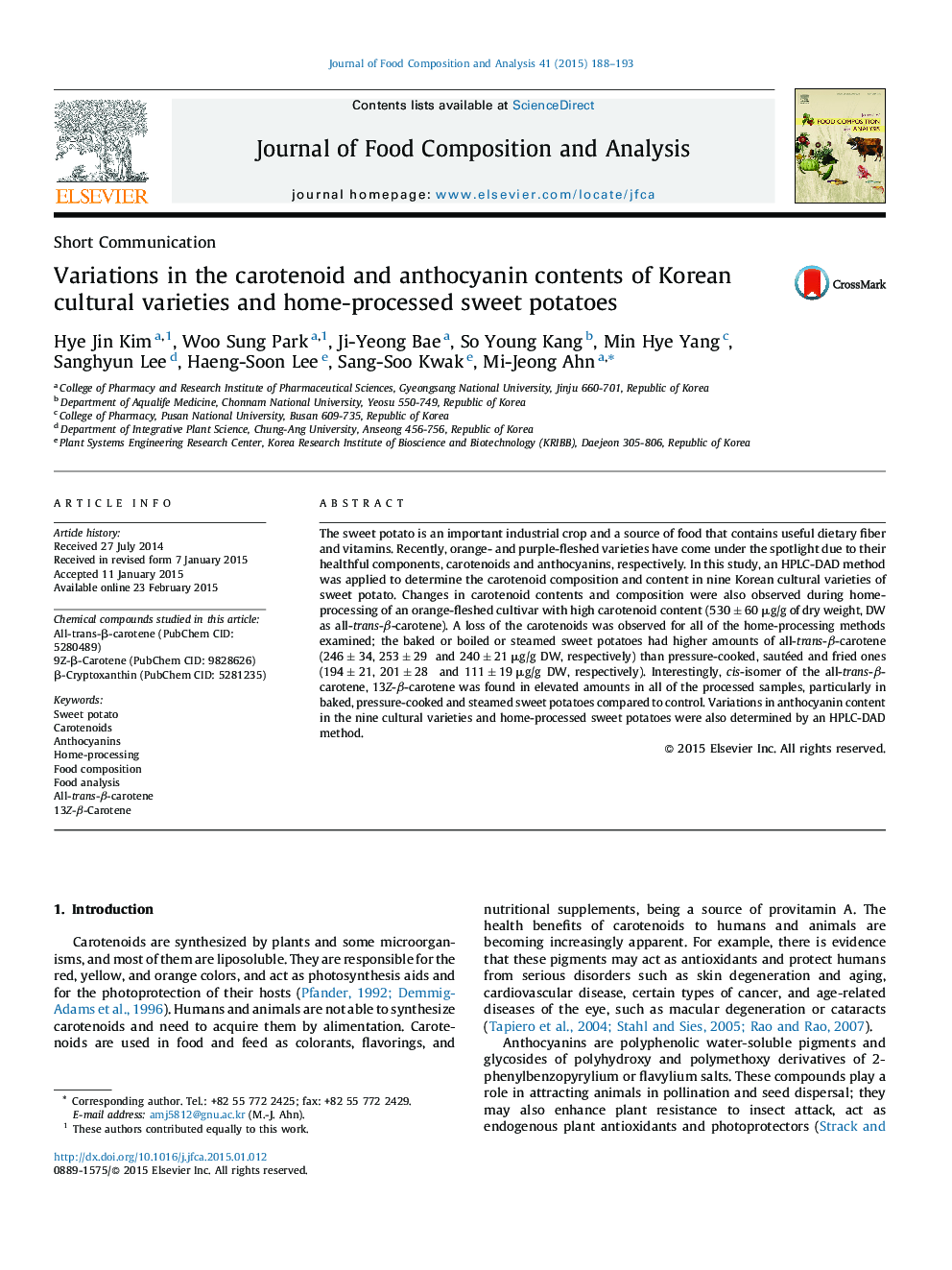| Article ID | Journal | Published Year | Pages | File Type |
|---|---|---|---|---|
| 1218246 | Journal of Food Composition and Analysis | 2015 | 6 Pages |
•Carotenoid and anthocyanin contents in Korean cultural varieties of sweet potato.•Changes in carotenoid content and composition during home-processing were observed.•Variations in anthocyanin content in home-processed sweet potatoes were determined.
The sweet potato is an important industrial crop and a source of food that contains useful dietary fiber and vitamins. Recently, orange- and purple-fleshed varieties have come under the spotlight due to their healthful components, carotenoids and anthocyanins, respectively. In this study, an HPLC-DAD method was applied to determine the carotenoid composition and content in nine Korean cultural varieties of sweet potato. Changes in carotenoid contents and composition were also observed during home-processing of an orange-fleshed cultivar with high carotenoid content (530 ± 60 μg/g of dry weight, DW as all-trans-β-carotene). A loss of the carotenoids was observed for all of the home-processing methods examined; the baked or boiled or steamed sweet potatoes had higher amounts of all-trans-β-carotene (246 ± 34, 253 ± 29 and 240 ± 21 μg/g DW, respectively) than pressure-cooked, sautéed and fried ones (194 ± 21, 201 ± 28 and 111 ± 19 μg/g DW, respectively). Interestingly, cis-isomer of the all-trans-β-carotene, 13Z-β-carotene was found in elevated amounts in all of the processed samples, particularly in baked, pressure-cooked and steamed sweet potatoes compared to control. Variations in anthocyanin content in the nine cultural varieties and home-processed sweet potatoes were also determined by an HPLC-DAD method.
